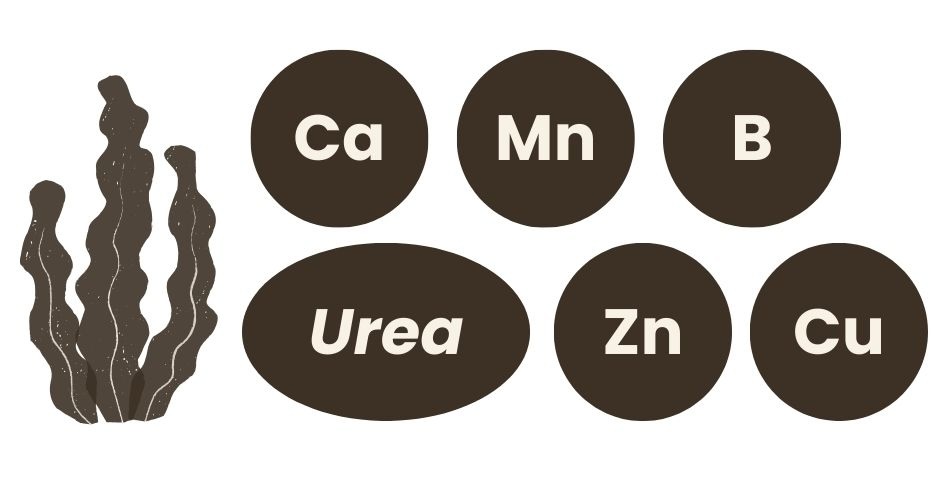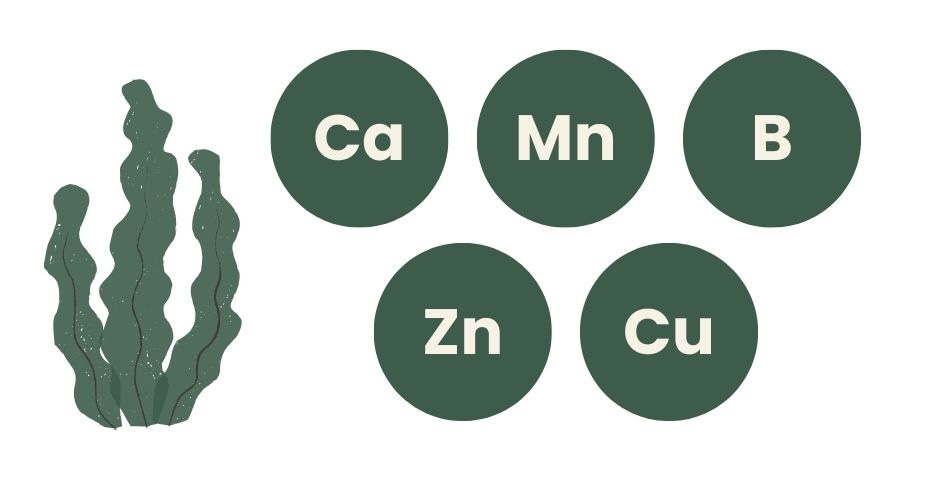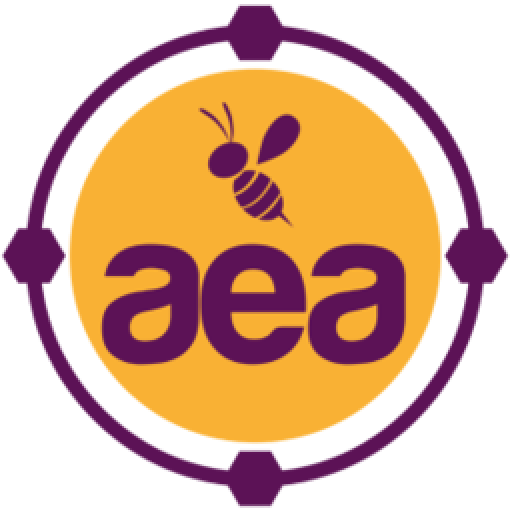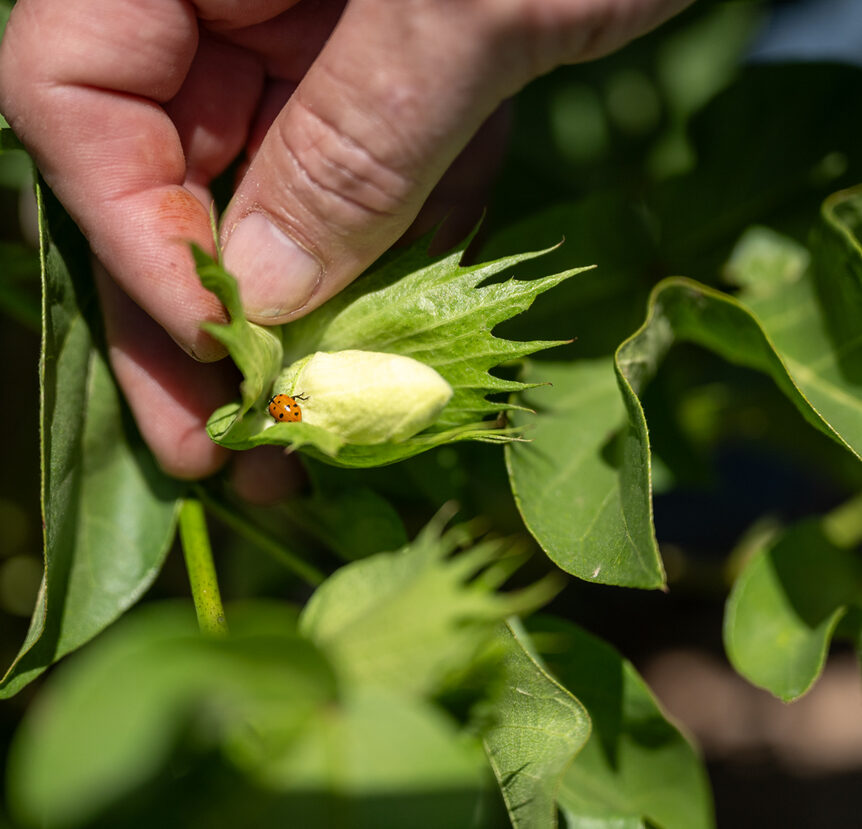Last week we introduced John Kempf’s idea of “Critical Points of Influence“–stages of plant growth where the plant undergoes a significant hormonal shift, and, by using appropriately-timed nutrient applications, the grower has an ability to have an outsized effect on quality and yield outcomes for their crop.
Today, we will discuss the first two of those Critical Points of Influence: Bud Initiation, and Bloom / Pollination. Both of these points are reproductive, so Cytokinin is the dominant hormone.
Bud Initiation
Bud initiation happens at different times for different crops. Fruit trees initiate their buds for the following year in the late summer or fall, after the crop has been harvested. Annual plants may initiate buds in the late spring or summer. As with all of the Critical Points of Influence, you need to know when each happens for your crop. But regardless of the timing, the principles we will discuss in this post remain the same.
What can we influence at this point?
Number of buds
- Not only the number of buds a plant creates, but also the number of vegetative buds that are converted to reproductive buds.
Bud uniformity
- Bud uniformity has two desirable effects: creating a condensed harvest window, and increased fruit uniformity.
Bud size and energy
- This directly translates into future fruit size, and, in certain crops, effects the number of fruit per bud.
Blossom size
Bloom timing
- Depending on the crop and conditions, a grower may want a later bloom to avoid frost damage, or an earlier bloom to harvest a crop earlier. Both outcomes can be achieved through nutrition.
Critical Minerals

Calcium
- Calcium is needed for cell division.
- With ample calcium, a plant can make the most buds possible, and the most embryos within each bud as possible.
Manganese
- Manganese correlates with cytokinin activity.
- It also helps with reproductive bud initiation.
- It is relatively easy to increase bud counts with sufficient manganese.
Boron
- Boron has a synergistic relationship with cytokinin.
- As an aid to calcium transport, boron helps move calcium into the furthest buds.
(With some plants, like tomatoes, you may notice that flowers higher up the plant are weaker than those at the base. This is a problem that boron can solve.)
Zinc
- Zinc contributes directly to bud size.
- Providing zinc in the fall is especially important for spur-bearing fruit trees, like cherries and apples–zinc helps make large spur leaves, which provide most of the energy to the growing fruit.
Copper
- Copper is stored in the bud, and will contribute to pollen strength.
- Copper can help varieties that have trouble with pollination.
Seaweed
- Seaweed has innumerable benefits for reproductive buds.
- It also provides great hormonal support.
Urea (non-organic growers only)
- In perennials, urea triggers reproductive bud initiation in the fall.
- Urea increases freeze tolerance of buds, since it has a high salt index. When applied as the plant is senescing, urea is transported to the buds without being converted to other forms of nitrogen, so it stays in the urea form throughout the winter.
- Urea isn’t allowed in organic production. Eventually, the soil biology will supply enough amino acid nitrogen. Until it gets to that point, organic growers could consider a foliar application of amino acids, in the form of a dry, water-soluble powder. It doesn’t offer the freeze resistance of urea, but does still have benefits for the buds.
Bloom / Pollination
What can we influence at this point?
Number of blossoms that are pollinated.
- It’s not hard to significantly increase the pollination success in varieties that are known to have trouble pollinating.
- Tree fruit growers may be wondering if we can decrease pollination rates–unfortunately, we haven’t yet figured out how to do that.
Speed of pollination
Condensed pollination window
- When buds are more uniform, pollination happens more uniformly
- Some crops can be entirely pollinated in 24-48 hours
Increased pollen strength
- This helps pollen to remain viable even if it’s been exposed to harsh elements.
Pollen tube strength
- Climatic stress, as from humidity, can collapse pollen tubes — stronger tubes resist this.
Critical Minerals
Bloom, like bud initiation, is a reproductive state, so this list is almost exactly the same as the one above.
You can foliar apply these nutrients starting about 2 weeks before the pollination window. This is generally right at bud break for tree fruit. We see a bigger response if the plant has an adequate supply of these nutrients further in advance–about 3-4 weeks before the pollination window. That means that perennials must have an adequate supply in the fall, before dormancy.

Calcium
- Calcium helps provide strength to cell membranes
Manganese
Boron
Zinc
Copper
- Copper contributes to the strength of pollen and pollen tubes
Seaweed
Next week we’ll dive into the next two Critical Points of Influence.
Don't miss the next post in this series. Subscribe.
You'll get each post to your inbox (~2x/week).
You may unsubscribe at any time. We value your personal information. Here's our Privacy Policy.
"*" indicates required fields


